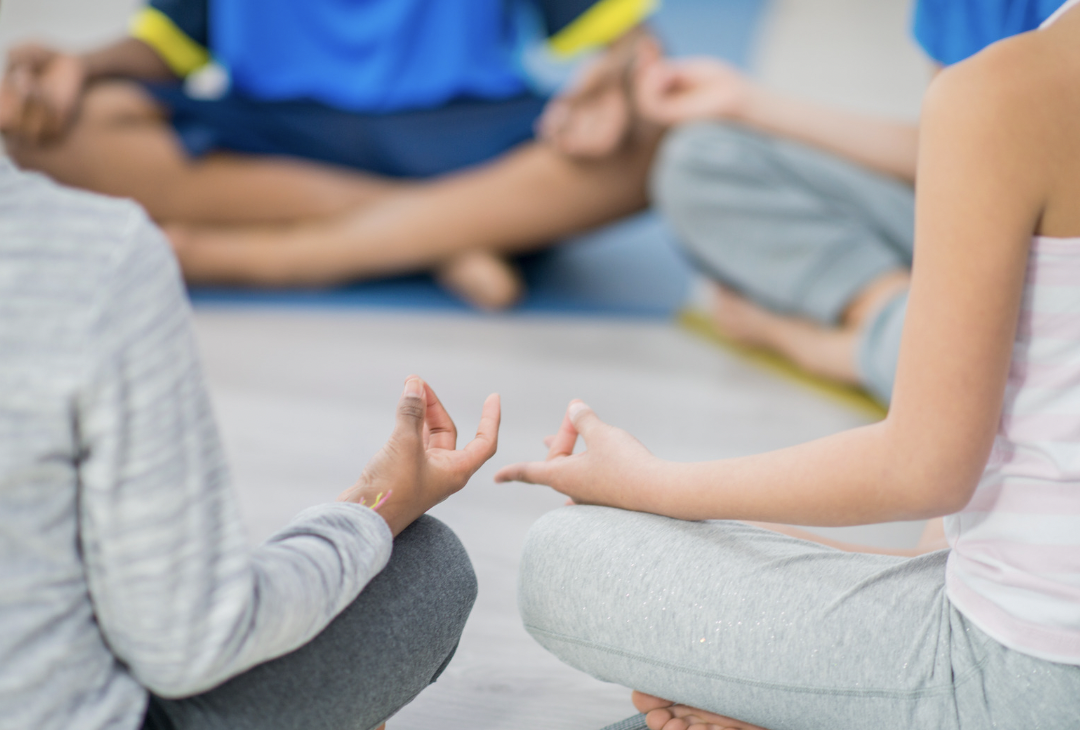
Meditation is a tool used to build mindfulness – the ability to be fully present. In the West, it’s had a surge in popularity over the last decade.
However, people have been meditating for thousands of years. While the exact origin isn’t known, the first written mention of it was in ancient Hindu texts from 1500 BCE.
Typically, meditation is seen as an adult practice. But scientific research shows that it’s good for children, too.
Today, we’ll discuss the benefits of meditation for children, and learn two exercises to help them get started.
Benefits of Meditation for Children
- Increased focus
- Better sleep
- Emotional regulation
- Stress management
- Better relationship with self
Types of Meditation
There are many types of meditation children can do:
- Focused meditation. Beginners usually start here, using the breath and its qualities as a guide. When the mind wanders, children can gently refocus on the breath. This builds concentration, awareness, and mindfulness.
- Walking meditation. This teaches children to focus on their body in motion, like how each step feels, how their arms swing, etc. This helps build awareness and mind-body connection.
- Mantra meditation. A helpful word or phrase is repeated aloud (e.g. “I can do anything I set my mind to.”). Children must focus on the sound of the words, and the intent behind them. This helps increase concentration, and creates a positive outlook on life.
- Body scan. Children sit comfortably and scan their bodies from head to toe. The goal is to notice and accept physical sensations (and the emotions that come with them), without trying to change anything in the moment. This promotes emotional regulation and body awareness.
- And many more, including two that we’ll talk about below.
1. Gratitude Meditation for Children
Gratitude is the feeling of appreciation and thankfulness for the good things in life. It can be for people, pets, experiences, or material things.
When we teach children gratitude, they learn to live in the moment, be more optimistic, and build strong relationships. It also helps reduce anxiety and depression.
Steps to guide our children through gratitude meditation:
- Sit in a comfortable position.
- Close your eyes.
- Notice how the body feels. Is it relaxed? Tense? Itchy? However it feels, it’s okay!
- Notice how the breath feels. Is it cold or warm when inhaling? How does it feel in the lungs?
- Notice how the mind feels. Is it busy or calm? Accept the thoughts and try to let them go for now.
- Inhale deeply, as if trying to fill the belly with air.
- Exhale completely and slowly, feeling the air leave the lungs.
- Repeat inhaling and exhaling five times.
- Now, think of someone/thing that you’re thankful for. It can be anything.
- Think about how this person/place/thing makes life better.
- Feel the warm, happy emotions it brings.
- Inhale deeply, letting those feelings spread through your whole body.
- Exhale and imagine sending those good feelings to that person/place/thing with your breath.
- Notice how you feel.
- When you’re ready, gently wiggle your fingers and toes, and slowly open your eyes.
Gratitude meditation for children: https://www.youtube.com/watch?v=aeAmVSA1HHM
2. Loving Kindness Meditation for Children
Loving kindness meditation is the practice of sending thoughts of unconditional love internally and to others.
It can help our children become more compassionate, empathetic people. It can also boost self-esteem.
Steps to guide our children through loving kindness meditation:
- Sit in a quiet place.
- Close your eyes.
- Take a few deep breaths.
- Now, imagine yourself being completely happy and at peace.
- In your mind, say “thank you” to yourself for being a unique, wonderful person who is great just as you are.
- Say a few encouraging phrases aloud. E.g. “I wish myself joy, I wish myself peace, I wish myself strength.”
- Let the feelings of warmth and compassion wash over you.
- Then, start to direct these feelings to someone close to you, who you love.
- Repeat the same encouraging phrases but for the person in question, “I wish you joy, I wish you peace, I wish you strength.”
- Sit with that good feeling for as long as you’d like. Then, gently open your eyes.
Eventually, this practice can be applied to other people, including strangers around the world!
Loving kindness meditation for children: https://www.youtube.com/watch?v=i9X6tkUXa9o
Summary
Meditation isn’t meant to be a perfect science. It takes trial and error, and plenty of patience.
At the core, all forms of meditation help children become more self-aware, mindful humans. It boosts their emotional and social well-being, and self-esteem.
With the steps outlined above, we can help our children start their own lifelong meditation practice.
Sources



